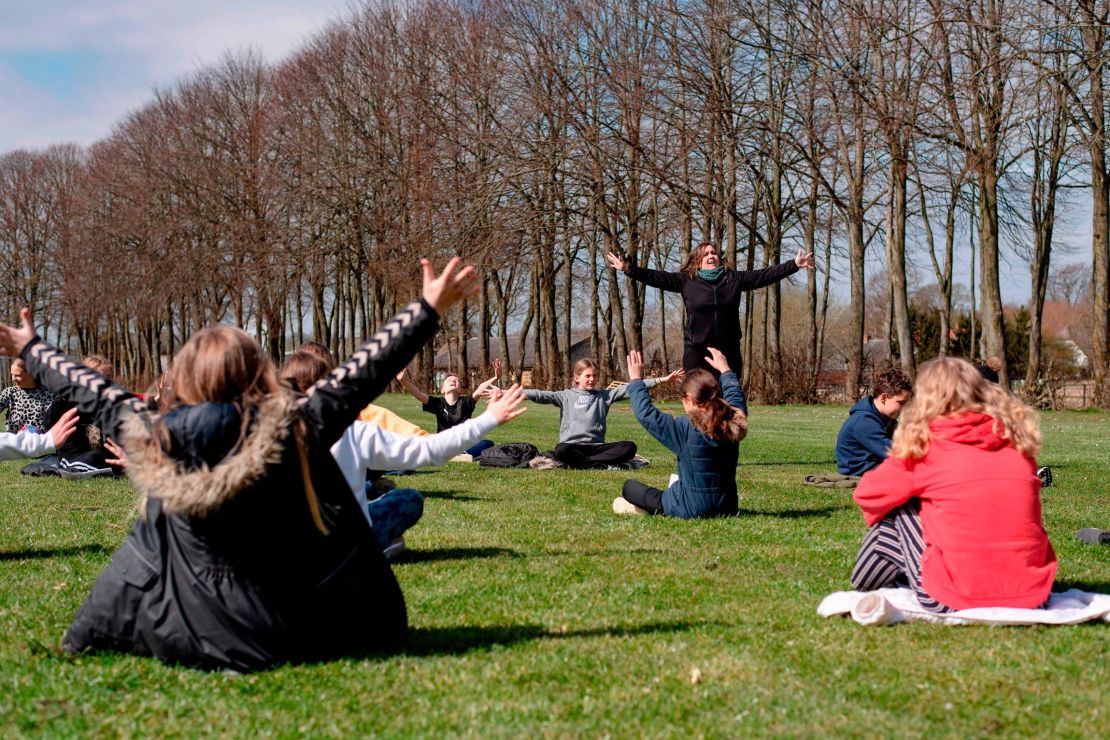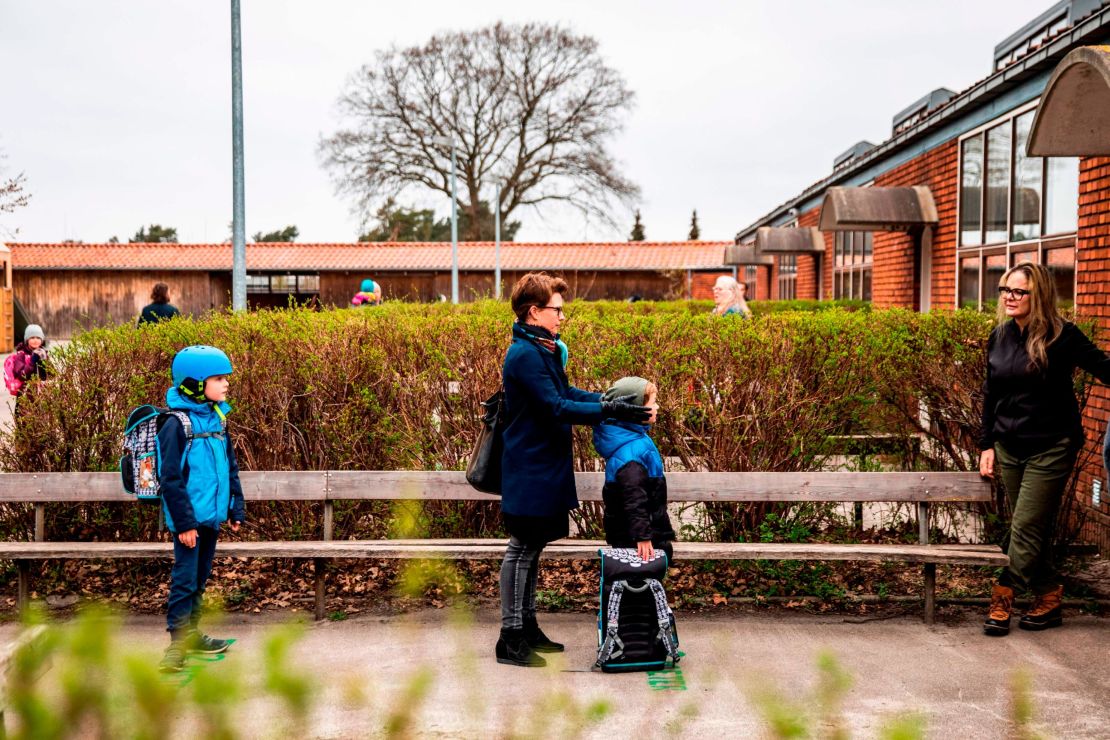This week, as younger children across Denmark walked onto school grounds, school bags on their backs and holding parents by the hand, things seemed almost normal. Almost.
Jimmy Skov Glasdam Adetunji, head of secondary education at the Hendriksholm School in Rodovre, just outside Copenhagen, spent Wednesday going through classrooms with a measuring stick to ensure the 440 students could be seated at least two meters (six feet) apart when they arrived on Thursday.
He had split the schoolyard into six sections with red and white barrier tape, and sent a detailed diagram to parents outlining staggered arrival times, routes, breaks and lunch times.
“I can’t wait to see the kids again,” Adetunji said. “But we will obviously have to talk about the pandemic and the rules and why our playground is now marked by police tape. So, it’s going to be a contrast between fun and seriousness.”

A few miles away, in Bronshoj, Philip Mundt was dropping his six-year old son Emil for his first day back. “He is so excited,” Philip said, laughing. “All the way here, he’s been talking about how he’s going to see his friends and that this is the best day of his life. He is really looking forward to this.”
Schools across Denmark raised flags in celebration as they welcomed back younger students this week, with an excitement comparable to a first day of school. And it is the first day of school in over a month, after Denmark announced widespread closures on March 11 to contain the spread of the coronavirus. The country was among the first in Europe to close borders, shops, schools and restaurants, and to ban large gatherings, among other measures. Now, it is one of the first to begin reopening.
The country has seen a continued drop in hospital admissions. More than 500 people were hospitalized with the coronavirus during March but, by mid-April, the number hospitalized had dropped to 353 – unlike the explosive rise seen in some other countries. As of April 16, 321 people had died, according to Denmark’s infectious diseases agency, the Statens Serum Institute.
“What we did right was that we closed down society very early in the epidemic and very efficiently,” said Allan Randrup Thomsen, professor of experimental virology at the University of Copenhagen. “So I do think there is room at this stage of the epidemic to open up some parts of society.”
The gradual reopening of Denmark was announced by Prime Minister Mette Frederiksen earlier this month, along with a decision to let the younger students through fifth grade, or approximately age 12, be part of phase one. Their schools must ensure new hygiene and distancing measures, however, to protect students and staff.

Government regulations now require Adetunji to make sure the children are split into smaller groups, can wash their hands immediately upon arrival and at least every two hours, and that contact surfaces like sinks, toilet seats and door handles are disinfected twice daily, among other things, before he can open the school.
Schools are also printing maps that mark entrance and exit routes and ensuring children remain outside as much as possible.
This is the reality of life under the pandemic – and one even the children seem prepared for. Ask any one of them and they are likely to promptly recite you the rules about hand washing, keeping their distance, not sharing food and not getting too close to each other in the playground.
But Thomsen acknowledges that risk remains.

“(Students are) a relatively large group of people – about 10% of the Danish population – and one that is difficult to control in terms of social behavior and hygienic precautions,” he said. “The institutions have done a lot to reduce risk but whether that will work is something we will probably see in the next two weeks or so.”
Adetunji and other school leaders say that while there has been some concern from parents and teachers about sending the youngest children back to school in that first wave, the vast majority has been supportive of the decision.
“I don’t think it is a secret that we have been asked to open the schools so parents can go back to work. At the same time, I think it is the right decision. The kids really need this social interaction,” Adetunji said.
Judging by their reactions, he may be right. Pandemic or not, life wants to be lived – especially when you’re a six-year-old.
The Danish government said Friday that it would relax more of its restrictive measures, with courts and some small businesses like hairdressers’, chiropractors and driving schools set to reopen on April 20.
Denmark seems to be on its way to life after the coronavirus – with the youngest leading the way into the new normal.



















